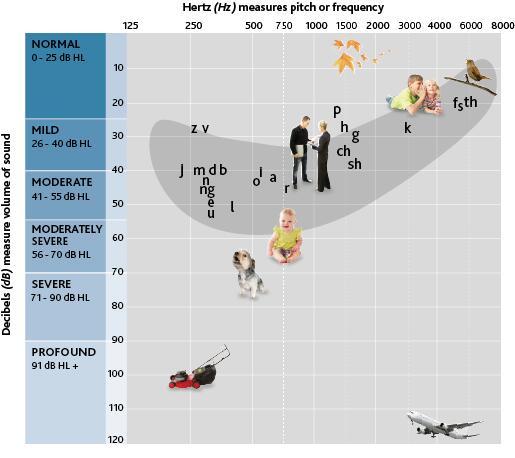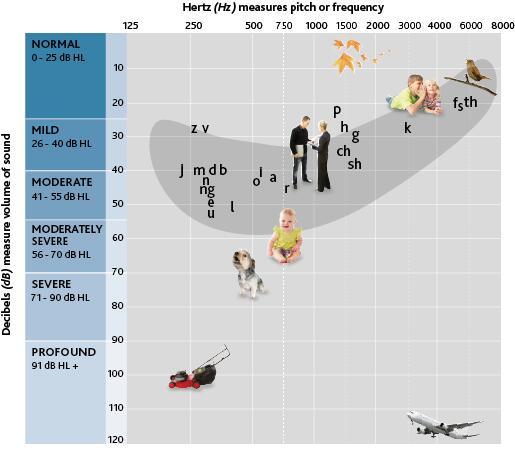Understanding your audiogram
Hearing loss is generally diagnosed using a chart called an audiogram. Learn what it is and how to read it.

What you'll find on this page
- Learn what an audiogram is
- Learn how to read an audiogram
- See examples of audiograms
What is an audiogram?
Audiologists use audiograms to record the results from a series of hearing tests. The ability to hear and understand speech is mapped in an area known as the ‘speech banana’ due to its shape.
How to read an audiogram
Volume is measured in decibels and is marked from top to bottom on the chart. Pitch, or frequency, is measured in hertz and marked from left to right.
The pictures and letters represent the sounds a hearing person can normally hear at different volume and pitch levels. That ranges from the very soft, like a whisper, to the very loud, like a plane.
The blue X line shows the left ear results from an air conduction test. The red O line shows the right ear results.
If a bone conduction test is also needed, the results will be marked using a blue > line for the left ear and a red < line for the right (not pictured below). The difference between the results of air conduction and bone conduction tests is known as the air-bone gap. An air-bone gap may mean a problem in the outer or middle ear. If there is no gap between air and bone conduction this may indicate a problem in the inner ear (cochlea).
Example audiograms
Type of hearing loss: severe to profound hearing loss in both ears
Type of hearing test: air conduction
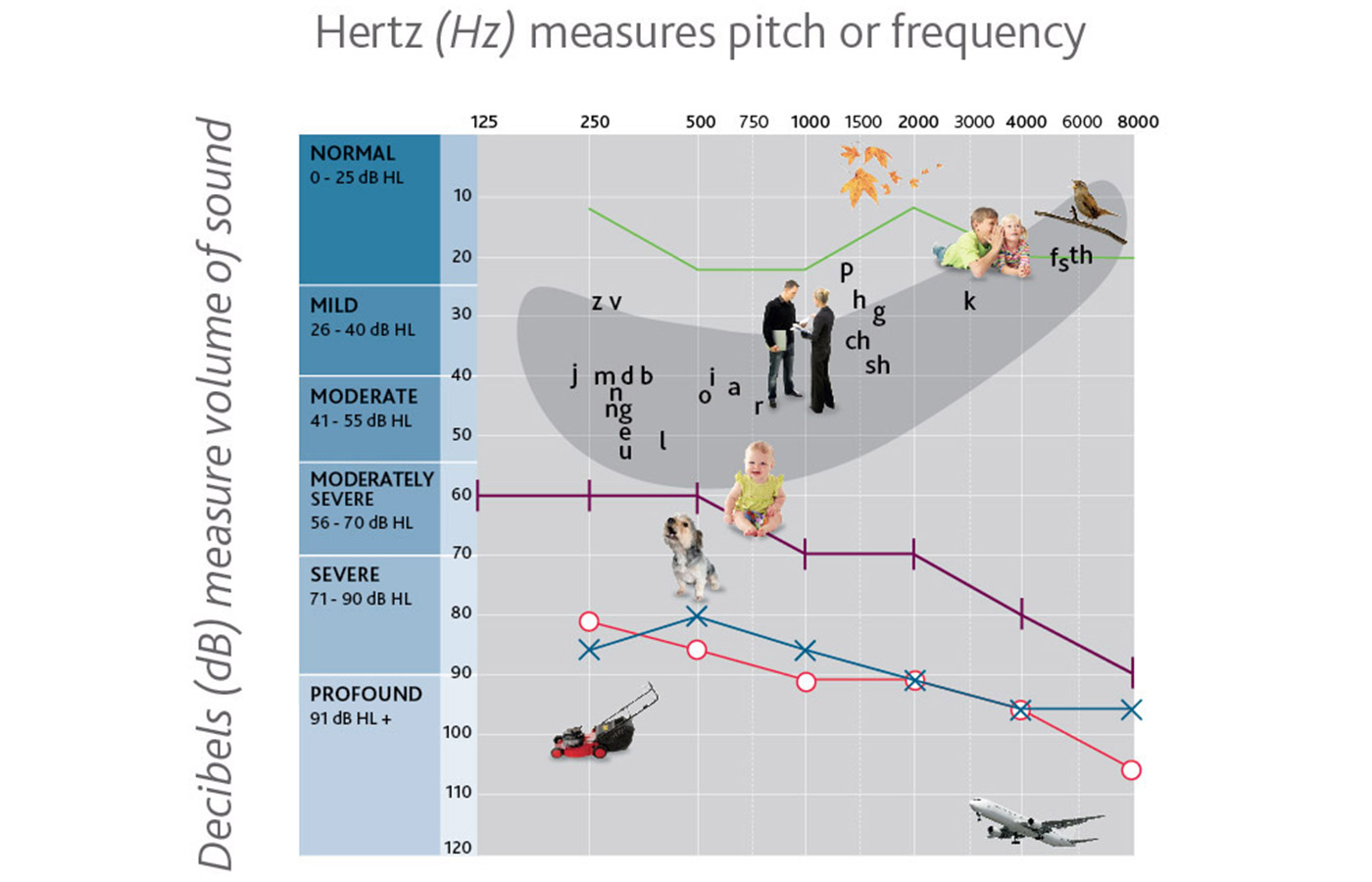
Type of hearing loss: mixed hearing loss in the right ear
Type of hearing test: air conduction and bone conduction
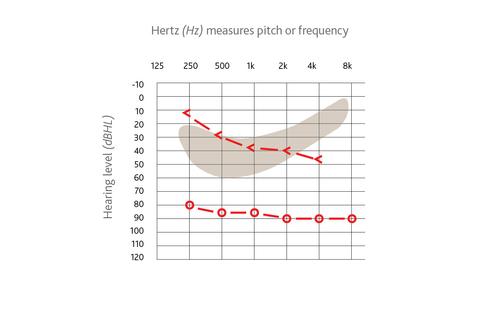
Type of hearing loss: conductive hearing loss in the right ear
Type of hearing test: air conduction and bone conduction
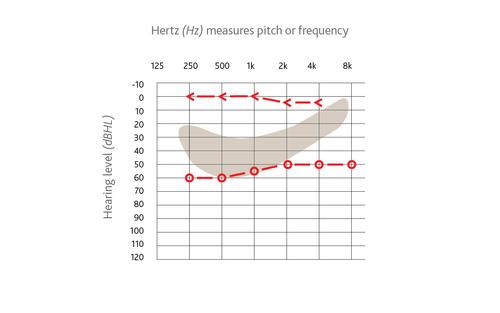
Type of hearing loss: single-sided deafness (SSD) in the right ear, normal hearing in the left ear
Type of hearing test: air conduction and bone conduction
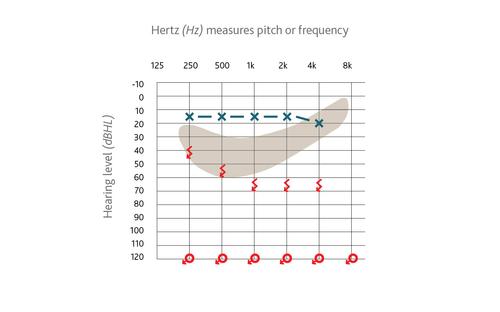
Find a Hearing Implant Specialist near you
Disclaimer
Please seek advice from your health professional about treatments for hearing loss. Outcomes may vary, and your health professional will advise you about the factors which could affect your outcome. Always read the instructions for use. Not all products are available in all countries. Please contact your local Cochlear representative for product information.
Views expressed are those of the individual. Consult your health professional to determine if you are a candidate for Cochlear technology.
For a full list of Cochlear’s trademarks, please visit our Terms of Use page.



